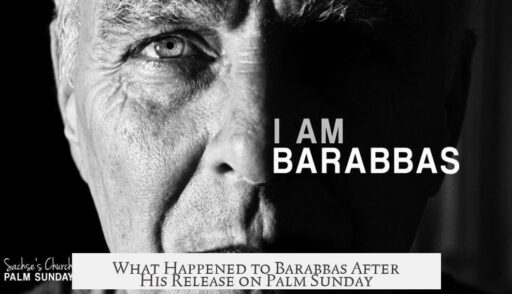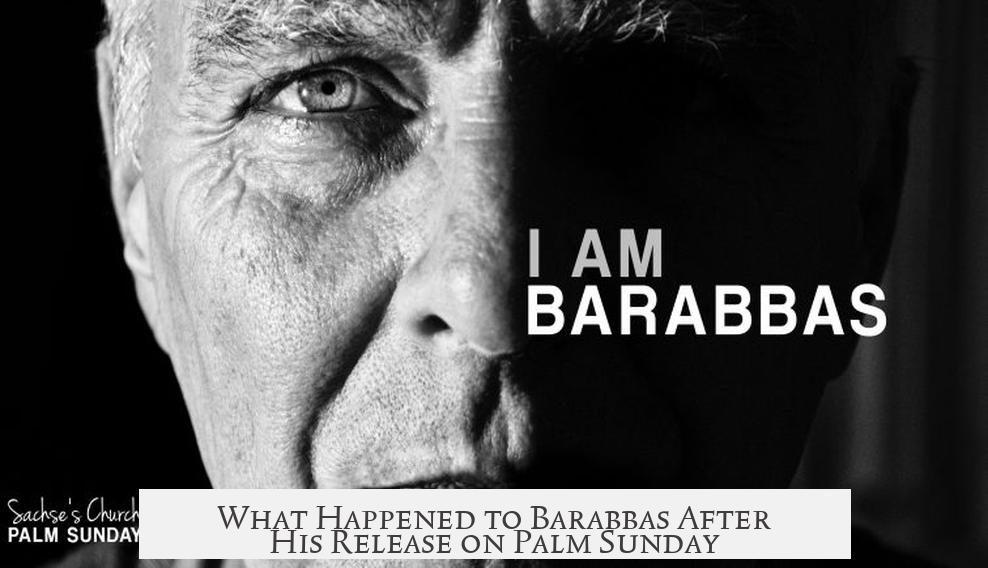After Barabbas was released, the Gospels provide no further information about his life or fate. The New Testament mentions Barabbas only in the context of his release by Pontius Pilate, when the crowd chose to free him instead of Jesus. Beyond this, the biblical texts do not detail what happened to Barabbas afterward.
Historians and scholars note a lack of independent evidence about Barabbas outside the Gospels. No known historical records or contemporary documents mention him. This absence leads to significant uncertainty about Barabbas’ actual existence or later life.
Many scholars suggest that Barabbas functions mainly as an allegorical or symbolic character. The Gospel of Mark likely uses Barabbas as a plot device, a scapegoat figure representing the violent rebel or sinner who was freed while Jesus, the innocent, was condemned. This theory aligns with the broader narrative strategy in the Gospels to emphasize themes of sacrifice and innocence.
Additionally, the tradition that Roman governors released a prisoner during Passover, as described in the Gospels, lacks historical backing. Ancient sources do not confirm such a custom. Considering Rome’s strict governance and harsh suppression of insurgents, releasing a violent offender like Barabbas (described as involved in rebellion and murder) appears historically unlikely.
Regarding apocryphal and extra-canonical literature, Barabbas appears rarely. Unlike many minor biblical figures, apocryphal texts seldom address him. One rare mention occurs in the text known as *The Martyrdom of Pilate*, which claims Barabbas was married to Judas’ sister. However, this detail remains isolated and unsupported by other sources.
In summary, details about Barabbas after his release remain unknown. The character likely serves a theological and literary purpose rather than reflecting verified historical events.
- Barabbas has no detailed history after his release in the Gospels.
- Scholars regard him as an allegorical figure, not a documented person.
- No historical evidence supports the Passover prisoner release tradition.
- Apocryphal texts mention Barabbas only minimally.
In Honor of Palm Sunday…What Happened to Barabbas After He Was Released?

So, what really happened to Barabbas after his dramatic release? Spoiler alert: The Bible tells us he walked free, but after that, his trail goes cold. No ancient scrolls, no historian’s diaries, no Roman records mention his next move. The truth is, Barabbas disappears into the dust of history, leaving only questions and a fascinating mystery behind.
Palm Sunday, the day when Jesus famously enters Jerusalem, also highlights the curious story of Barabbas. He’s the prisoner who took Jesus’ place on the cross after the crowd chose to release him instead of Jesus. But beyond the Gospels, who is Barabbas? What became of him? Let’s take a deep dive into the story and explore why he’s a puzzle with very few answers.
Barabbas: The Man, The Myth, The Mystery
Head first into the historical record, and you quickly realize Barabbas is a ghost. There’s no historical or independent evidence about Barabbas outside the Gospels. That means if you rely on Roman court records or other historians of the time, he’s a non-entity. He only manifests in the New Testament narratives, specifically during the trial of Jesus.
This absence of historical corroboration fuels the idea that Barabbas might not have been a real flesh-and-blood person. Many scholars argue that he’s most probably an allegorical character. Barabbas fits the mold of a classic plot device.
The Allegory Behind Barabbas
Imagine the Gospel writers crafting their story. Mark’s version, in particular, uses Barabbas as a narrative tool to build tension and symbolize a larger point.
Barabbas represents the sinful, rebellious man—the exact opposite of Jesus’ meek, innocent character. His release at Passover contrasts with Jesus’ sacrifice, which is central to Christian theology. In many ways, Barabbas serves as a scapegoat allegory, symbolizing humanity’s sins being set free while the blameless Jesus suffers.
So, was Barabbas a real prisoner? Did the Romans really release a dangerous insurgent during Passover? The historical reality casts serious doubt here.
The Problem with Passover Prisoner Releases

Popular tradition holds that Pilate released a prisoner at Passover to appease the Jewish crowd. But there’s zero external evidence supporting this. No Roman records or Jewish writings mention this practice, making it sound like a biblical invention tailored to the dramatic narrative.
Even more, the idea that the Romans would release someone identified as a violent insurgent—a man involved in rebellion—goes against what we know about Roman governance. Releasing a rabble-rouser could stir more unrest, something Pilate would want to avoid.
Historically speaking, it’s highly unlikely any Roman governor would freely release a prisoner like Barabbas during a volatile festival that often invited unrest.
After the Release: Where Did Barabbas Go?
This question invites speculation because the canonical Gospels don’t say. And what’s truly intriguing is the silence of other Christian writings.
Christian apocryphal literature—the less orthodox texts many early Christians produced—usually fill in backstories or flesh out minor figures. Yet, they barely mention Barabbas. This absence is unusual for someone with such a prominent Gospel role! If Barabbas had an exciting or meaningful life after his release, surely someone would have written about it.
One interesting exception is a text called The Martyrdom of Pilate, an apocryphal work claiming that Barabbas was married to Judas’ sister. Beyond that, these claims go no further. It’s as close as we get to an “extra-biblical” tidbit about Barabbas, and it is far from being a historical fact.
So What Can We Learn from This?
The lack of real information about Barabbas after his release offers an intriguing lens on how stories form around religious and cultural events. It shows how a character can serve a narrative purpose more than a historical one.
Have you ever encountered stories where a dramatic figure simply vanishes after their pivotal moment? Barabbas is an archetype of that phenomenon.
His release reminds us that sometimes, characters in historical or religious texts are shaped to make a point rather than to record a biography. The dramatics serve to emphasize larger truths—through contrasts and allegories—rather than straightforward historical accuracy.
Practical Lesson for Today

When reading historic or religious texts, keep an eye out for characters like Barabbas. They often illuminate the author’s intentions more than actual events. Ask yourself: What message does this figure convey? What ideas do they embody?
In this case, Barabbas sheds light on the themes of sacrifice, justice, and mercy that are central to the Easter narrative. His release shifts the crowd’s focus onto Jesus’ path, highlighting the paradox between innocence and guilt, freedom and sacrifice.
Next Palm Sunday, as you see the waving palms and hear the stories, remember Barabbas. While the crowds freed him 2,000 years ago, his story remains locked—inviting us to question and explore beyond the surface of scripture.
Final Thoughts
Barabbas after release? It’s a story told mostly through silence. The lack of historical proof, the allegorical nature, and the rare mentions outside the main Gospels suggest he’s less a historical figure and more a powerful symbol crafted by early Christians.
So maybe the real question isn’t what happened to Barabbas after he was freed, but why his story matters at all. And that, dear reader, is where the mystery transforms into meaning.




